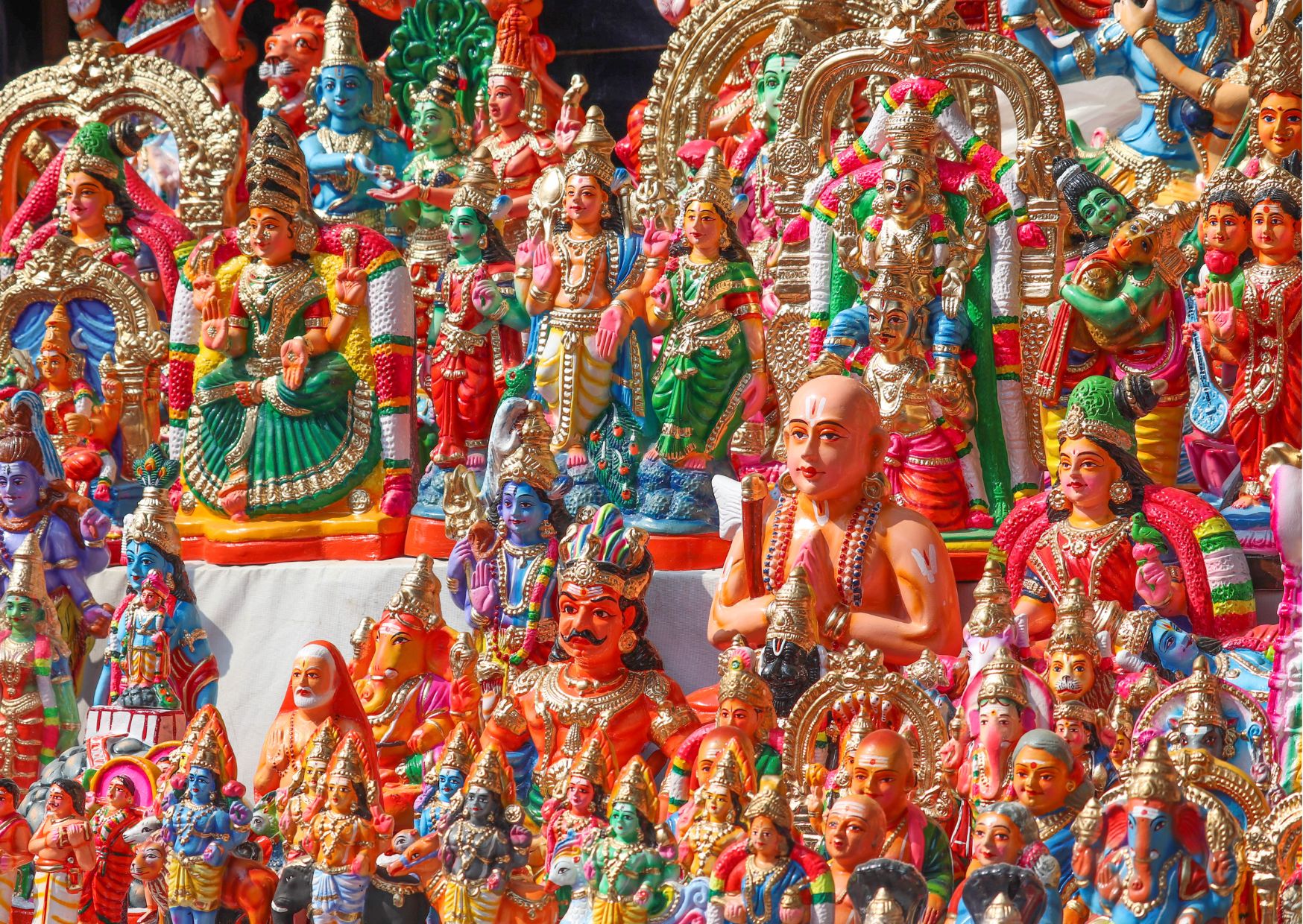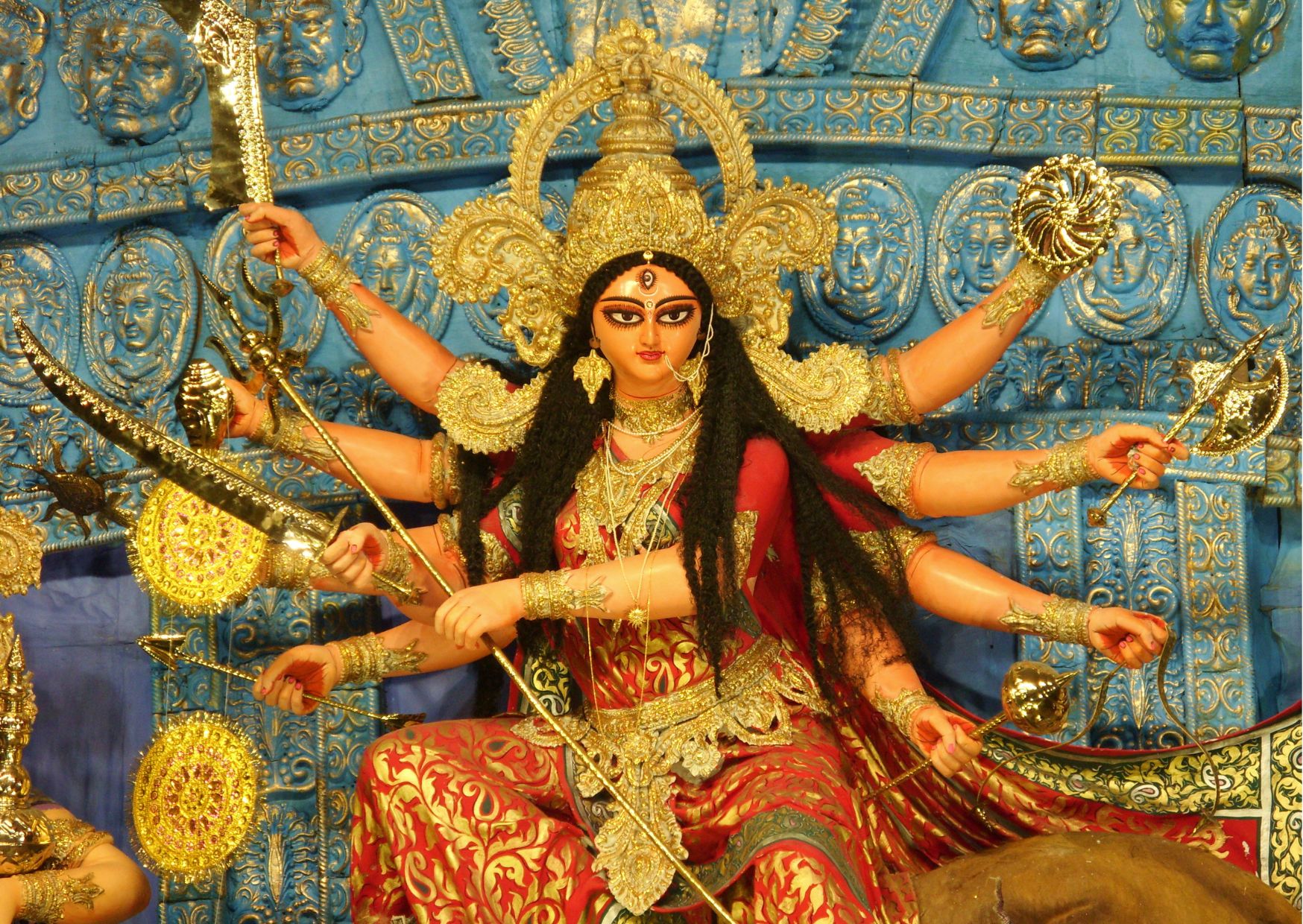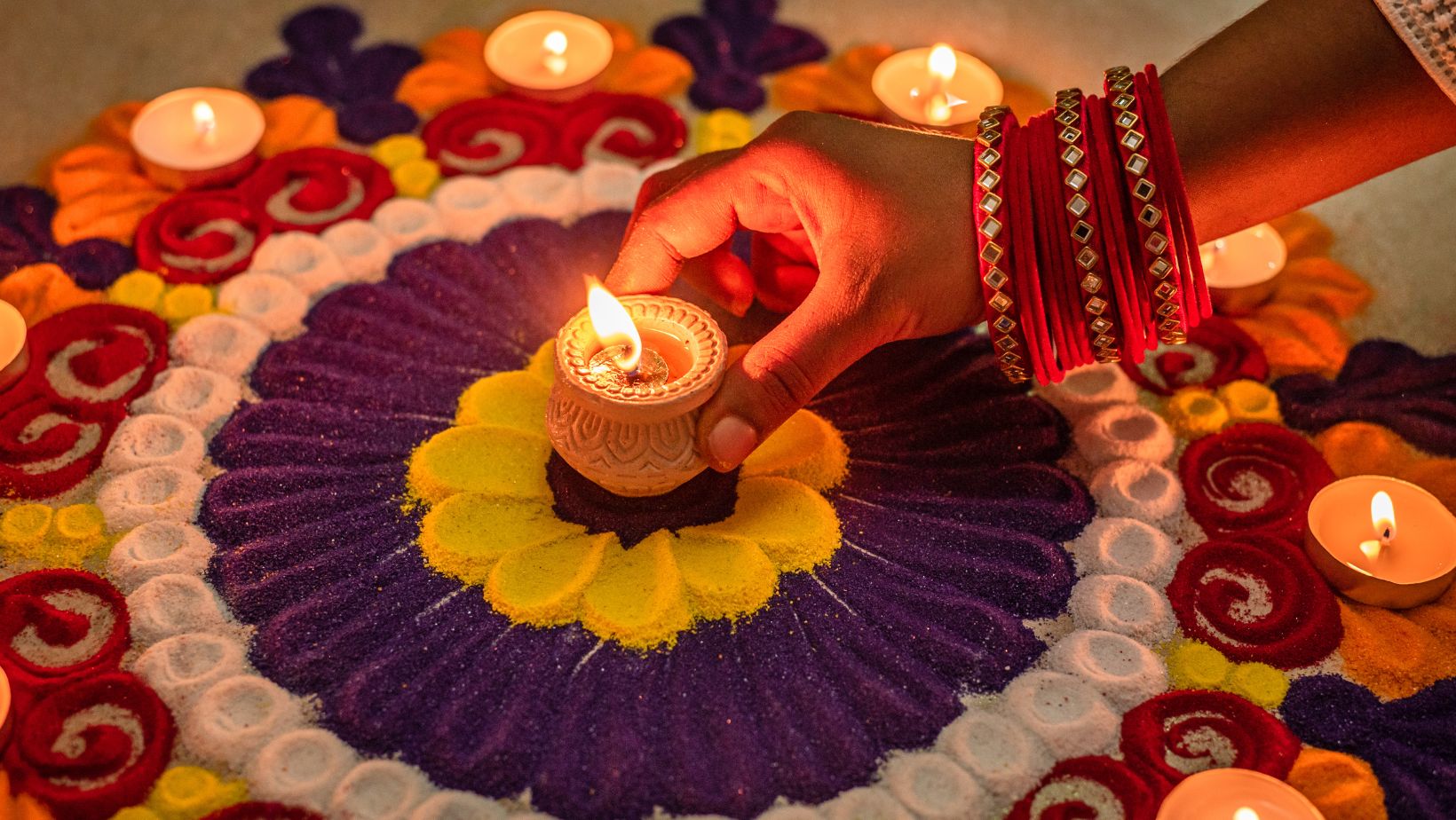When a Sindhi bride married a Tamil groom: she discovered a wonderful similarity in both cultures
Did you know of these similarities in the two cultures?
West meets South!
I am a Sindhi, born and brought up in Mumbai, and married to a Tamil Brahmin. West Meets South. There is a vast difference between the two states Maharashtra and Tamil Nadu. There are many differences in the culture, traditions, festivals, the way they dress up, speak, and more. The major difference is the language, which is a tongue twister! But now after 22 years of marriage, I can communicate with a vegetable vendor and bargain too!
Which Sindhi and Tamil festivals share similarities?
I was so confused initially when the festivals were celebrated. I searched for something similar, something in between…
Finally, I found one. It was the Golu festival. It is celebrated in the South the way Sindhis celebrate Deepawali.
Let me put some light on it. During Deepawali, Sindhi people display clay or resin figurines on a decorative base and perform puja for three full days. To my joy, during Navratri, the Tamilians too display clay figurines or dolls on steps and perform puja for nine days. I had found a wonderful similarity and was overwhelmed with joy by it.
All about the Golu dolls and festival!
This festival is very popular here in the South. It is called “Golu”. Resin figurines/clay idols/small utensils/clay vegetables etc. are displayed on steps.

There are many varieties of Golu. These delicate things are made of soft earth and glow with glaze, gold, pigments, colours, motifs and designs. The dolls of any Golu are a combination of religious symbols, deities and regular day to day characters. Animals and plants for a part of the Golu too. Sometimes scenes from sacred epics are recreated as well.

The top tiers of a Golu are reserved exclusively for figurines of Gods and Goddesses like the Dasavataram dolls, Murugan or Karitkay, Asthalakshmi or eight Goddesses who are hugely popular. Then there are also a large number of dolls of shopkeepers, merchants like the Chettiar and Chettitchi dolls, a wedding procession, a cricket team playing in a field, pretty vegetable sellers, farmers, flower sellers etc. The odd nationalist figures like Gandhi and Nehru too can be spotted standing somewhere on the steps.

Then there is Talai Aat Bommai, a doll with a moving head. It is a flexible doll made of four parts and you have to assemble it so that if you touch any part of the body, it starts to dance sideways or forward and backwards. At the bottom step of the floor, you will find human figurines and more dolls like the Talai Aat Bommai. Each household decides how many steps they would like to display. These steps are stacked in odd numbers, starting from 3,5,7,9 and so on. But the sky is the limit. Most houses display up to 11 steps.
What is the story behind Golu festival?
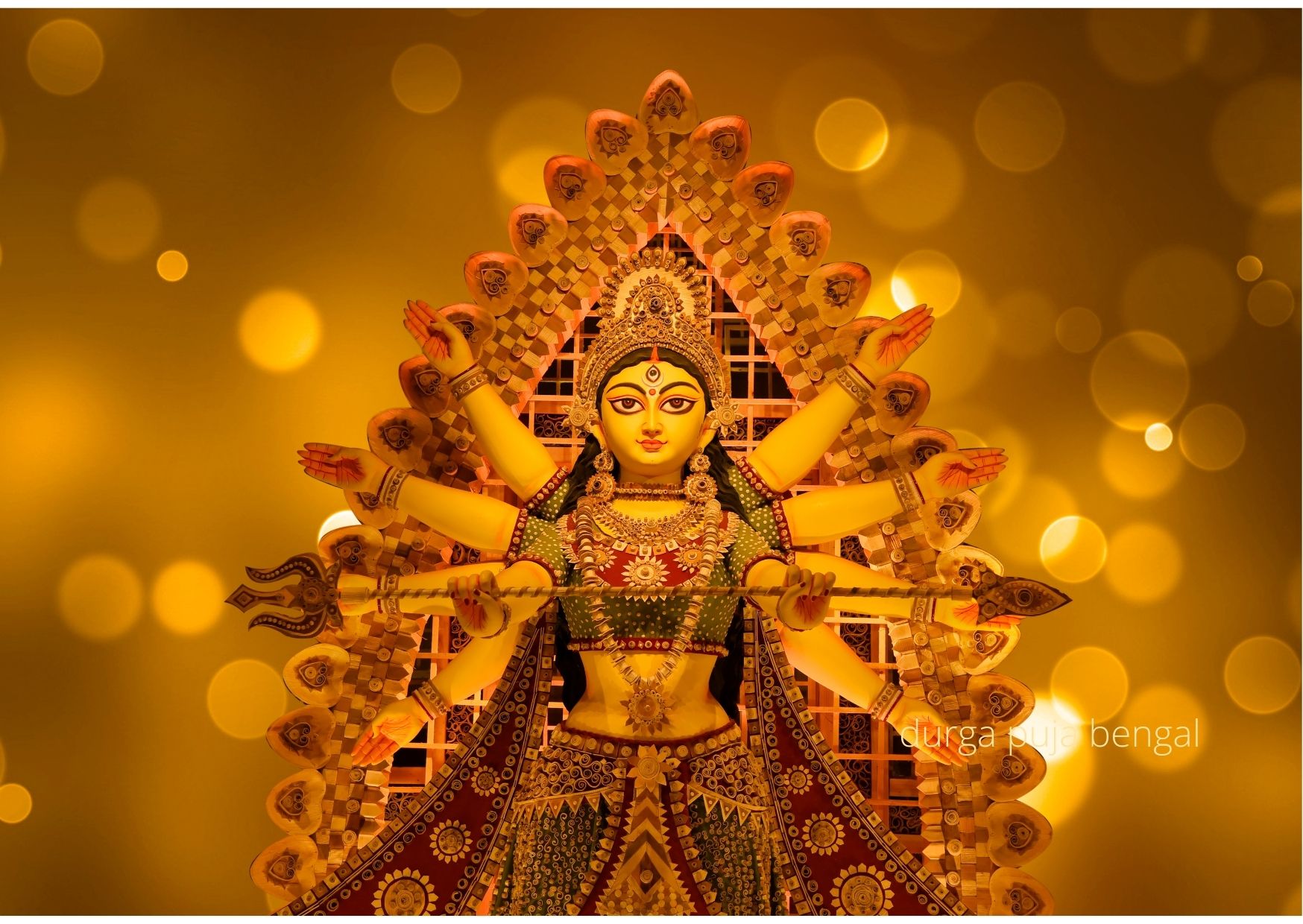
As per scriptures, the story behind the festival is that, when Maa Durga wanted to kill an evil demon Mahisasur, she didn’t have enough strength to face him alone. So she asked all the Gods and Goddesses for strength. They transferred their strength to her and stood still like statues till she succeeded in killing the demon Mahisasur. Hence Golu is celebrated as an acknowledgement for the unity of and sacrifice that the Gods and Goddesses made in the fight against adharma. The figurines displayed are mostly of Hindu Gods and Goddesses as this is a Hindu festival.
How is Golu celebrated?

Every year during Navratri people buy at least one new figurine to add to their collection. They decorate their home… the steps are first covered with a beautiful cloth then decorated with flowers and serial lights. The entrance and open yards are adorned with rangoli and lamps. Pooja is performed daily and different prasad is offered to God. The prasad is mostly savoury (for which nine different lentils are soaked each day, boiled, and seasoned with mustard seeds, asafoetida, curry leaves and a hint of grated coconut).
In the evenings, a Kuthuvilakku (traditional brass lamp with five or 7 sides to light) is lit in the middle of the rangoli made in front of the Golu. Devotional hymns and shlokas are chanted. After performing the pooja, the prasad that has been prepared is offered to the Gods and Goddesses and then distributed amongst the family members and people present there.
Golu is also a time to socialise and connect with friends and family
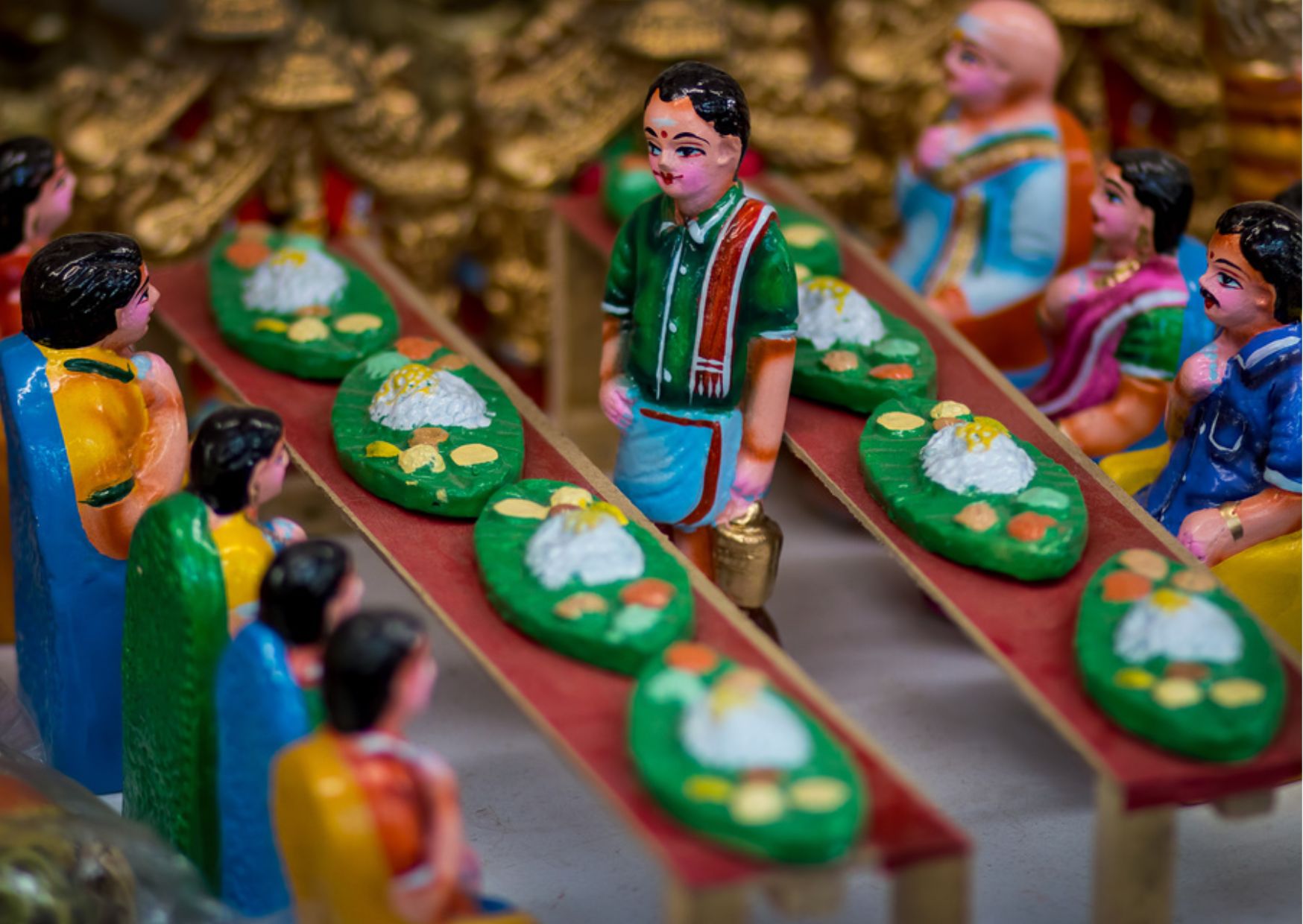
During this festival, people love to visit each other’s homes and admire the colourful rangolis and the Golu displays. It is a chance for everybody to mingle with their neighbours. They exchange haldi-kumkum, sweets, fruits, flowers, bangles etc.
The ninth day of Golu
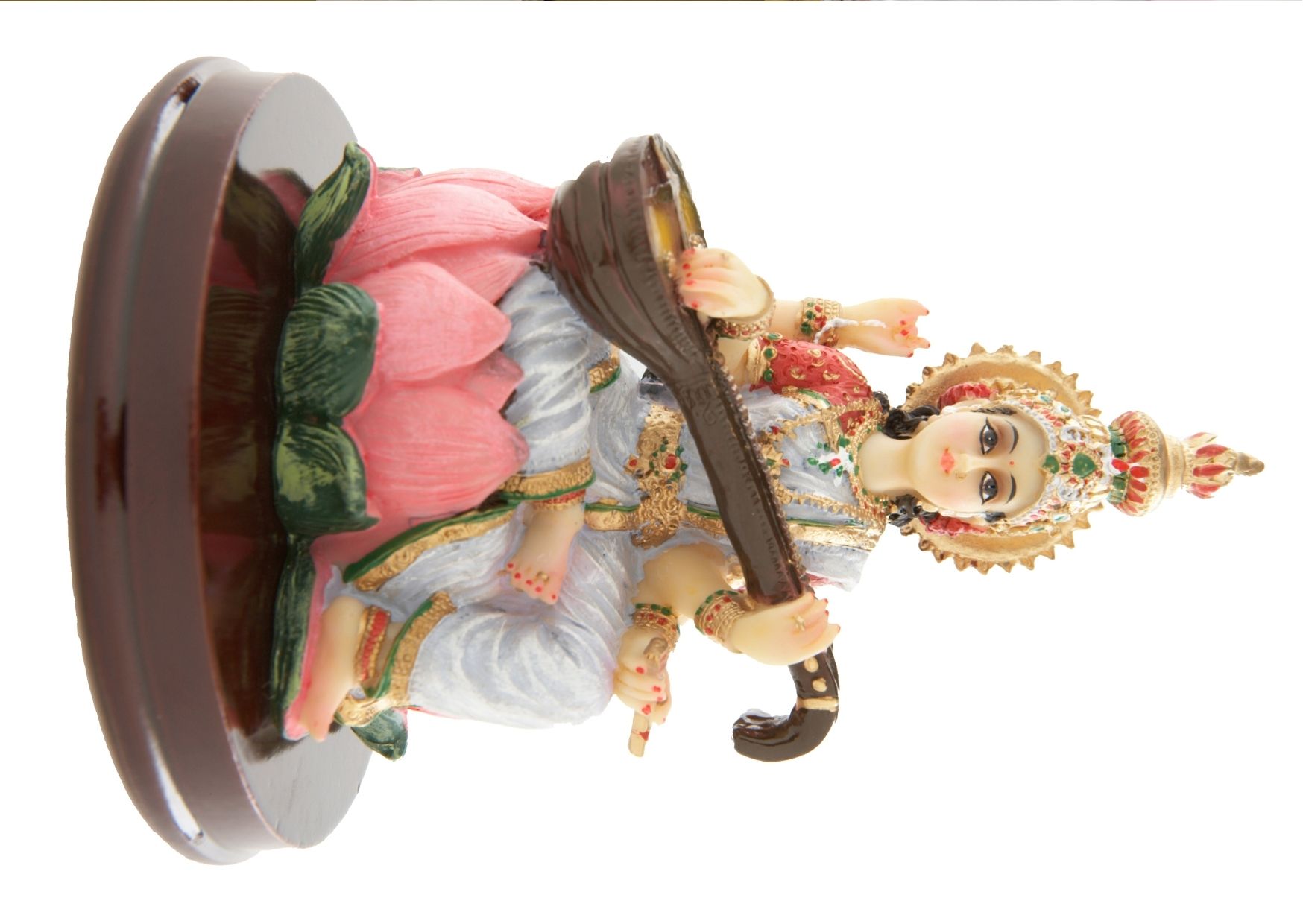
On the ninth day, a special pooja is offered to Goddess Saraswati. She is the divine Goddess of wisdom and enlightenment. To get her blessings, children’s school books, identity cards and passports of all family members are placed on one of the steps. That day at night all the figurines and dolls are placed in a lying down position. The next day they are taken and neatly wrapped in newspaper to be safely stored. They are then secured in a box so that they are not damaged and can be displayed next year too.
Next time when you are in Tamil Nadu, make sure to visit one of the houses, I am sure they will welcome you with great warmth and give you a return gift too. These are given only to girls and married women. This festival is known as Golu/Kolu in Tamil Nadu, Bombe Habba in Karnataka and Bommala Kolivu in Andhra Pradesh.
Shlokas that help us understand our beloved Ganpatibappa better

